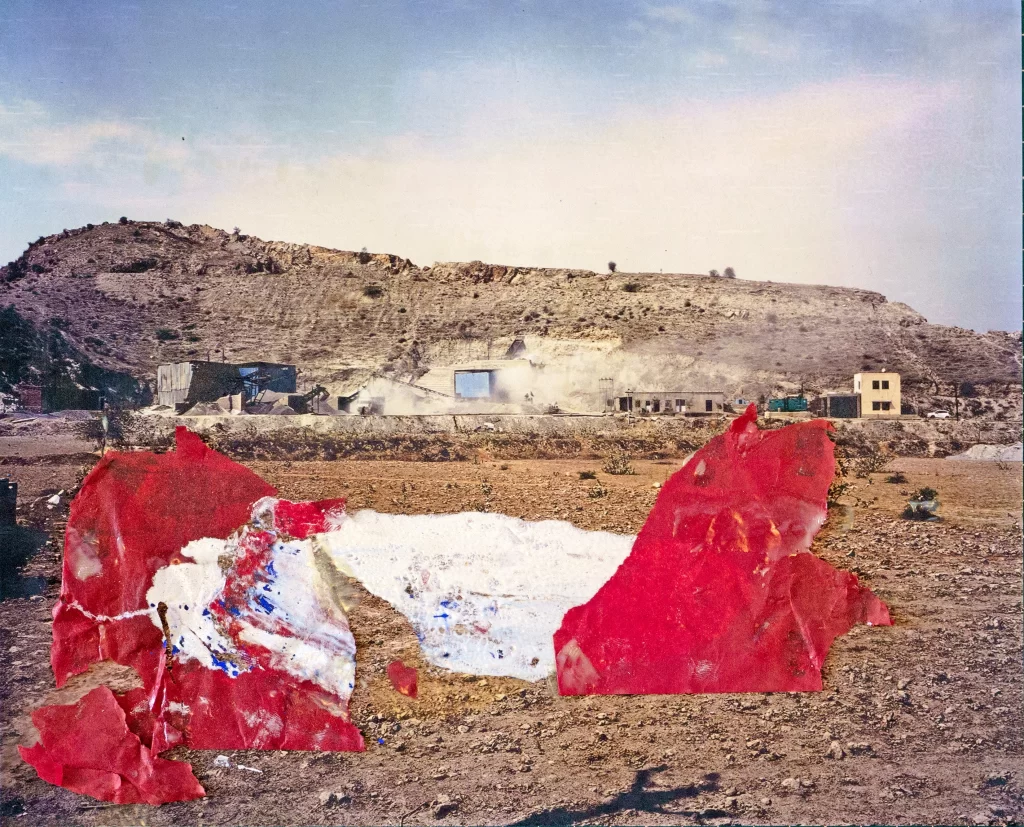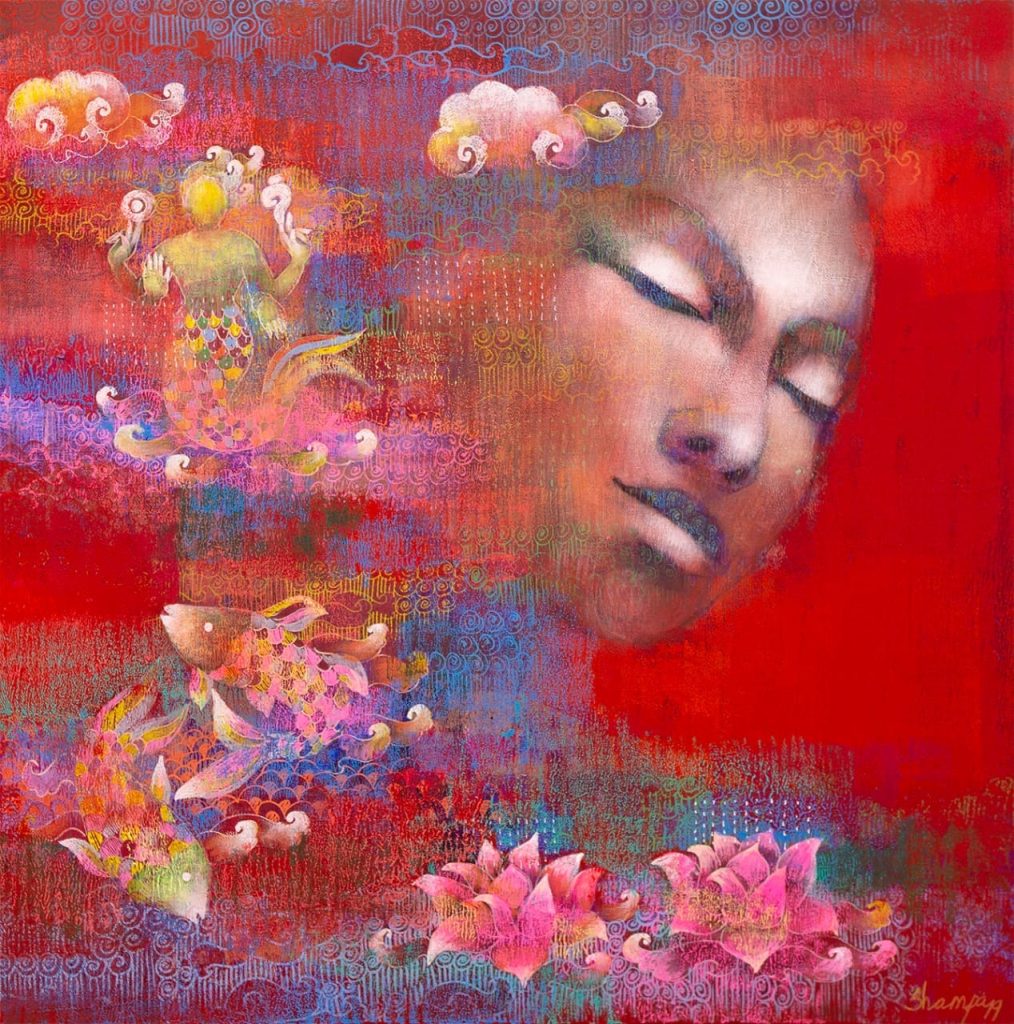Gallery Espace’s 35th Anniversary
Gallery Espace celebrates its 35th anniversary this October. Since its inception, the gallery has become one of India’s leading art spaces, known for its innovative exhibitions and support of emerging talent, the exhibition highlights its history and harkens to the future.
Gallery Espace’s New Exhibition – The Ancestral Futures
With a tribute to M F Husain on the wall as one enters, to an interestingly-fashioned clay faucet with the sounds of water dripping and a large wooden installation hanging from the ceiling of the first floor, to the second floor, Gallery Espace celebrates its 35th anniversary this October with an exhibition titled Ancestral Futures, curated by Damien Christinger. The gallery also inaugurated its additional new gallery space on the second floor of the adjoining building at New Friends Colony, with an exhibition featuring Arun Kumar, Ravi Agarwal and Ashish Sahoo. The impact of the two exhibitions is that they deliver interesting versions of the past, present, and future, as seen through the lens of the artworks.
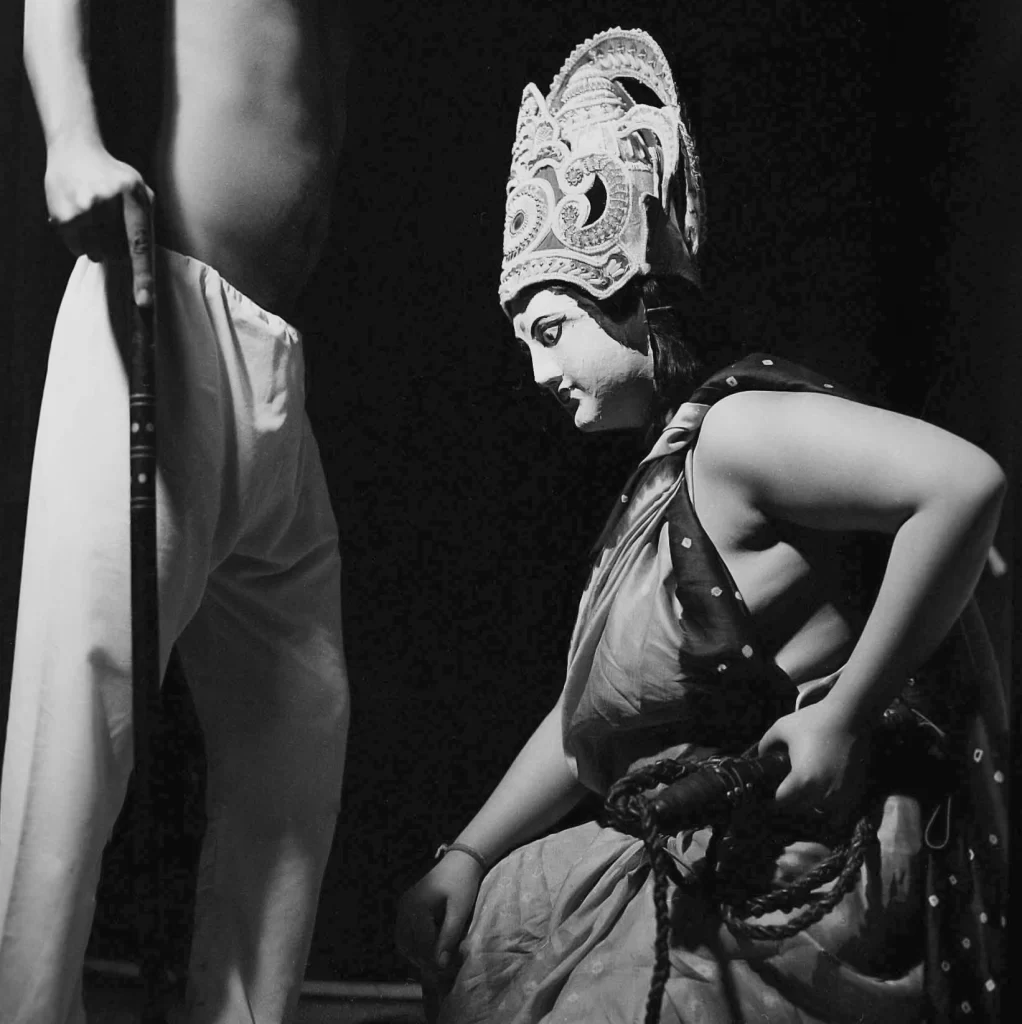
“Since we opened in 1989 with an exhibition by the legendary MF Husain, we have grown to become one of the galleries that people always visit, and look forward to experimental exhibitions,” says gallery founder and director, Renu Modi. Gallery Espace had begun to push the envelope with multiple large-format exhibitions like Drawing 1994, Miniprint 1996 and The Self and the World, 1997, assembling 16 Indian women artists that featured the likes of Amrita Sher-Gil and Anjolie Ela Menon. Later it was Kitsch Kitsch Hota Hai (2001), that led an exposition of pop and kitsch in contemporary art; and Leela (2003), which grew out of a residency featuring Bhupen Khakar, Amit Ambalal, Atul and Anju Dodiya in Haridwar; Lo Real Maravilloso (2009).
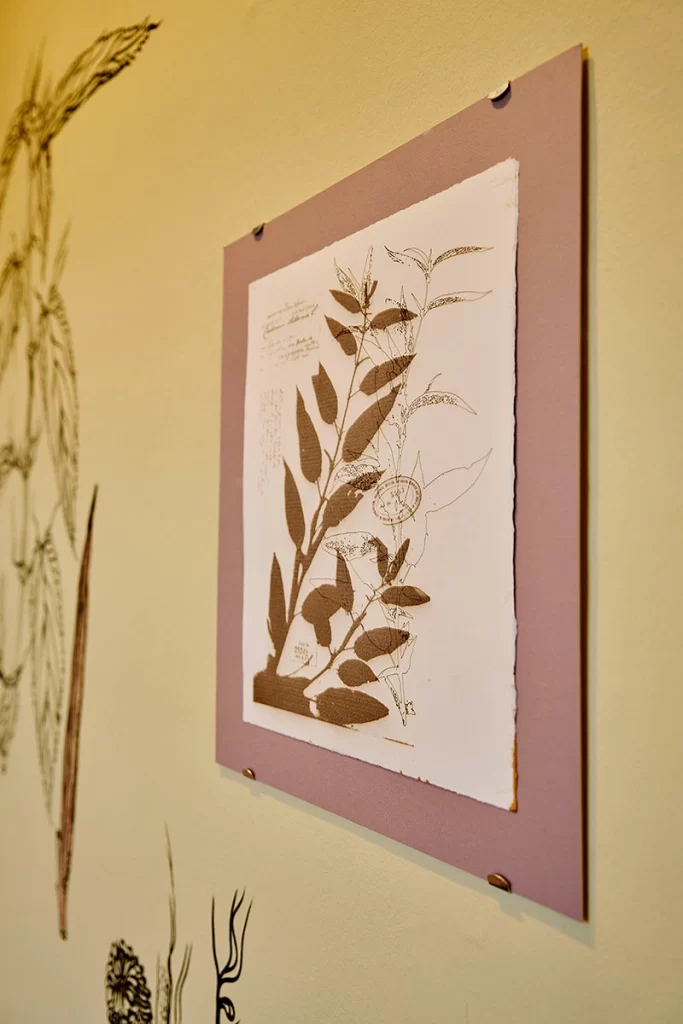
This exhibition celebrating Espace’s anniversary features, Arunkumar HG, Ashish Sahoo, Ashok Ahuja, Harendra Kushwaha, Ishita Chakraborty, Nandini Bagla Chirimar, Maze Collective, Michael Guenzberger, Ravi Agarwal, Sharad Sonkusale, Sonia Mehra Chawla, Ujjal Dey and Ursula Biemann. The works that recall Husain’s inaugural exhibition, take an aspect of Husain’s work as just the tip of the iceberg.
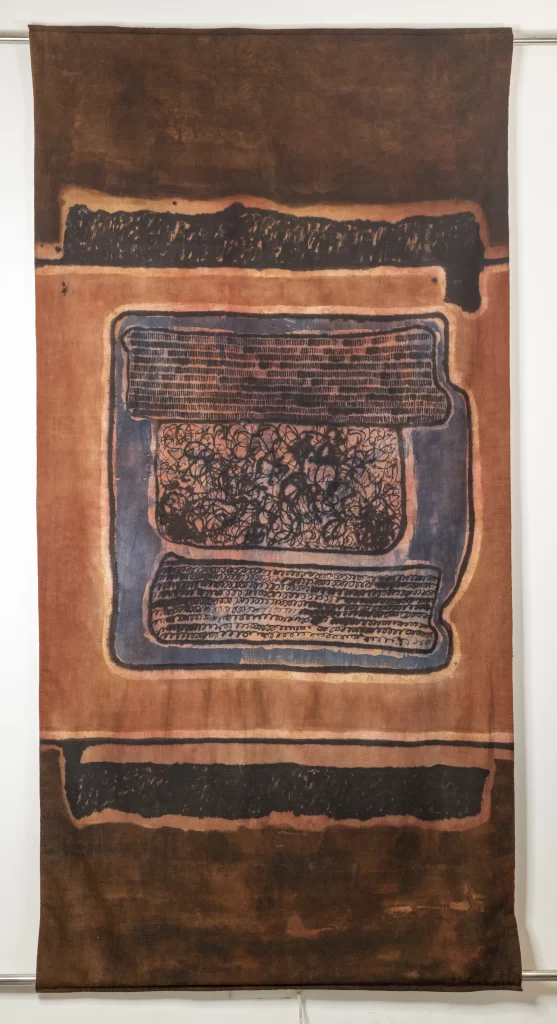
“Ancestral Futures—a term first coined by Brazilian thinker Ailton Krenak—envisions possibilities of bringing these contradictions together,” says curator Christinger, adding, “Shared stories, individual experiences, cultural expressions, ideas of progress promised, fulfilled, or broken, dreams of achievements and growth the exhibition addresses all these aspects after-all, we can’t just dwell on the past, but the sole orientation towards the future might also blind us to what exists around us in the present,” Christinger contemplates.
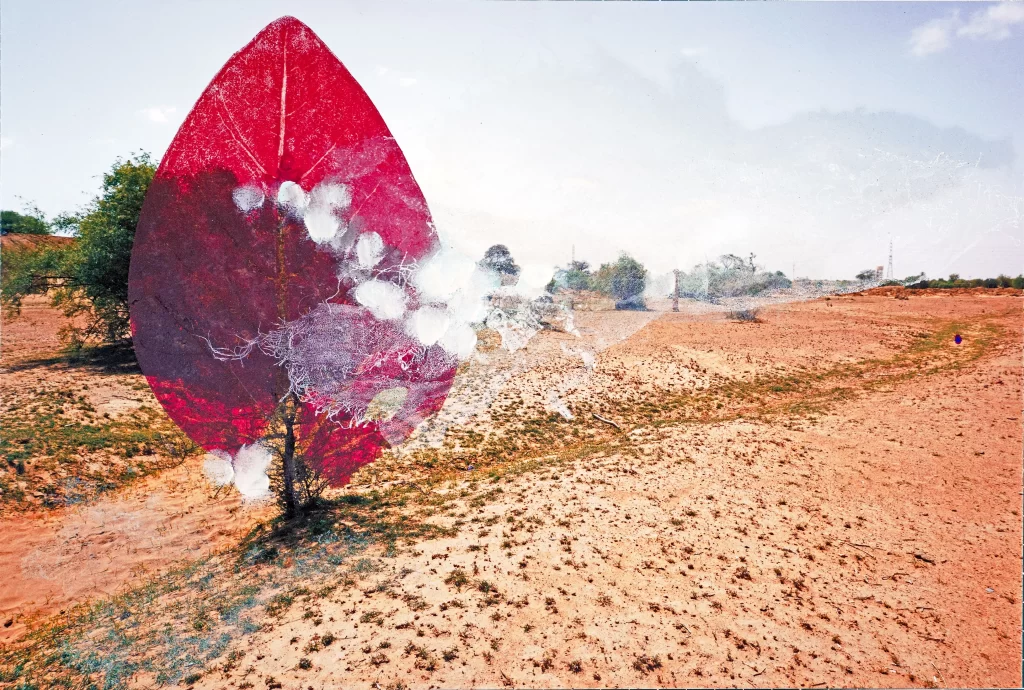
The future through the lens of many of the artists, like Arun Kumar HG and Ravi Aggarwal appears quite dark. Arun Kumar’s large lenticular prints reveal how beautiful grasslands have changed into dumping yards with non-bio-degradable waste—when first viewed the lenticular prints display grasslands, then when we change our position, we see the biowaste and the effect is bone-chillingly true. His deity constructed from reclaimed wood also appeals to viewers to consider reusing waste wood and recycling what would be considered cast-offs.

Ravi Agarwal is fascinated with capturing the gritty imagery of machinery at the power plant. While the photographs‘ aesthetics, captured in industrial greens and ochre shades, are quite appealing, one cannot forget that the overuse of machines leads to pollution and environmental degradation.
Offering the mythological readings of hope Ashish Sahoo’s Narrative Flux – VIII employs images that are a contemporary retelling of the Ramayana. He presents the narrative through a series of ambrotypes or wet collodion process plates arranged alongside lines of poetic text. Sahoo worked with stage artists including Chhau dancers and theatre actors, bringing the dynamism of their performances to the still image. He also creates a digital projection of still and moving imagery that tells of Sita’s triumph over her kidnapping by Ravana. To create the narrative the Odisha-born Sahoo researched the different versions of the Ramayan that exist in India and South Asia. He explored how even the oldest stories exist in a state of constant transformation as their interpretations are influenced by the socio-cultural environments within which they are placed.
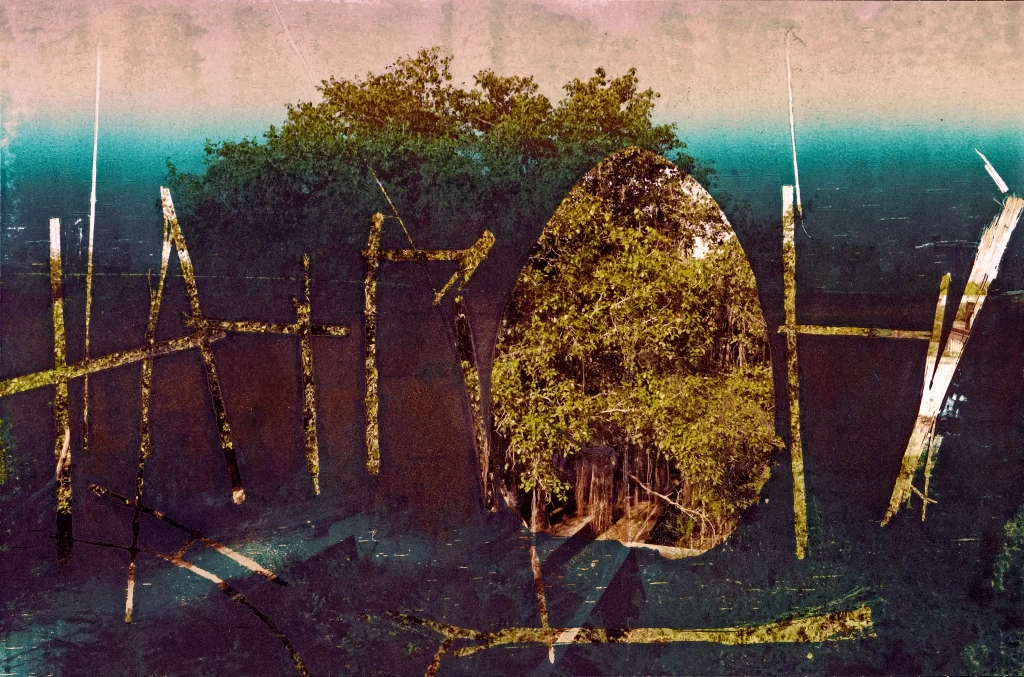
In the regular gallery, one is presented with the works of artist, Jaimini Jariwala whose Folds of Time is a minimal tribute to M.F Hussain, through old posters overlayed paint and text. Uzma Mohsin’s Homeless Horse is a silver gelatine print pasted on the poster and makes several references to the white horse that was Husain’s muse.
Ishita Chakraborty’s sculptural work, From the Abyss, is a terracotta sculpture on a wood stool supported by a metal armature, with the sound of gurgling water playing in the backdrop. The minimal work is open to readings and one is immediately reminded of the various water issues across the world: from ownership of rivers to pollution of drinkable water to the droughts faced across the globe. Harendra Kushwaha Threads of Harmony: The Timber Wolf and Nijgadh’s Echoes Teak wood & nylon thread. His art is deeply rooted in his hometown – the countryside of the Terai hills, bordering India and Nepal.
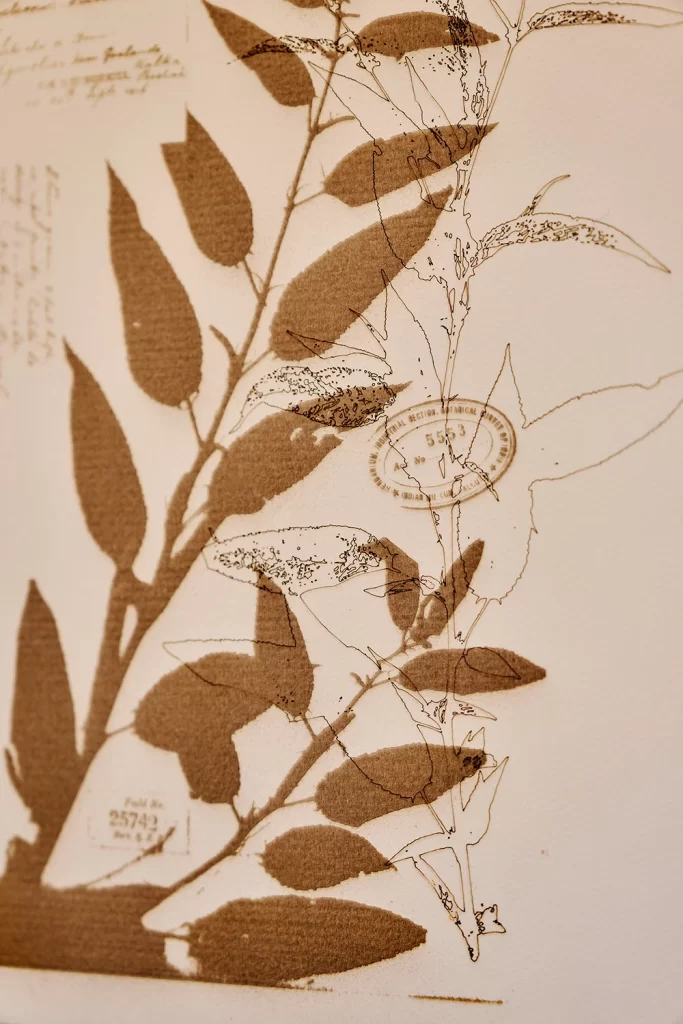
Nandini Bagla Chirimar’s series It’s the Little Things… is a collection of works made with pencil, collage and hand-ground cinnabar and red lacquer pigments on Sekishu natural paper, that speak of her memories, of the past and the present times as well. The quiet works form an interesting counter to the larger works and bring us a moment of pause to appreciate her fine draftsmanship and feel that slight tug to heart evoked by objects of the past. Downstairs, Sonia Mehra Chawla’s Labouring Bodies, large photographic prints mounted against jute cotton textile, print, natural jute stitched border, hand-crafted natural jute tassels and handmade wooden beads, is an elaborate tribute to the sleight and labour of workers in the jute mills.

This work is offset by the large colour works by Ujjal Dey Memory Scape series is rendered in Kalamkari Ink, Alum Mordant painted mud resist, catechu, madder and indigo dye on myrobalan dyed khadi cotton cloth. The narratives of Dey’s work evoke memories associated with personal objects, landscapes and ritualistic practices, where the specific references are reduced to primary, semi-abstract forms. Sharad Sonkusale’s Untitled-Sharad, Acrylic, black pigment, rice paper on canvas elucidates the mood of Bhakti poets from Maharashtra and ties in well together with the mood of self-reflection that the display conveys with Ashok Ahuja’s semi-abstract work titled The Matrix Planes, that is made from dibonded archival pigment digital print on Hahnemuehle fine art paper in Duco painted wooden structure with clear acrylic sheet protective front.

The show will run at Gallery Espace from October to December 12, 2024.
Image Courtesy – Gallery Espace

Georgina is an independent critic-curator with 18 years of experience in the field of Indian art and culture. She blurs the lines of documentation, theory and praxis by involving herself in visual art projects. Besides writing on immersive art for STIRworld, she is a regular contributor for The Hindu, MASH Mag and Architectural Digest.

